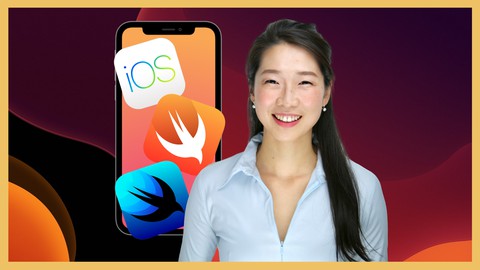Create A Delay Or Wait In Swift
Sometimes you need to create a wait or delay in your Swift code.
Create A Delayed Function Using AsyncAfter
To run a block of code after a time delay, use asyncAfter:
let secondsToDelay = 5.0
DispatchQueue.main.asyncAfter(deadline: .now() + secondsToDelay) {
print("This message is delayed")
// Put any code you want to be delayed here
}Call A Function After A Wait Time
To call a function after a certain period of time, you can use the perform function:
let secondsToDelay = 5.0
perform(#selector(delayedFunction), with: nil, afterDelay: secondsToDelay)
@objc func delayedFunction() {
print("This message is delayed")
}Sleep Execution For A Specified Time
To sleep execution after a period of time use the sleep function
print("hello")
sleep(5.0)
print("delayed message")Be careful! Calling sleep will halt execution of the rest of your program. Usually this isn’t what you want. This function is typically only used in tests.
Using A Timer To Delay Execution
You can use the Timer class to also delay execution.
let timer = Timer.scheduledTimer(withTimeInterval: 5.0, repeats: false) { (timer) in
print("delayed message")
}Specifying Run Loop Mode
Note that the timer runs in the default run loop mode. This means it can be frozen when certain user behaviors are detected, such as a scrolling a UIScrollView.
You can solve this by adding the timer for RunLoop.Mode.common.
RunLoop.current.add(timer, forMode: RunLoop.Mode.common)When To Use A Wait Or Delay
There are couple of situations where a wait or delay is useful.
Testing
During an automated test such as a KIF test or other type of test, a wait can be useful in ensuring an element has appeared on screen. It’s better however to wait for a specific action or element becoming visible rather than to wait on a fixed time limit.
In XCTests, you can use waitForExpectations to wait for a condition to be true and also specify a time out as well. To read more, check out the official Apple documentation here.
In KIF tests, you can use functions waitForTappableViewWithAccessibilityLabel and waitForViewWithAccessibilityLabel.
Timed Functions
Sometimes you want to run a function on a timer. This can be used to detect when a user is inactive or to refresh data on a certain interval.
Blocking Behavior
There are times when you want to prevent a user from doing a repetitive action too frequently. For example, you may want to limit how many times a user can refresh the data or how often a user can request a confirmation email or text.
This will prevent your server from being spammed.
Alternatives To A Wait Or Delay
Depending on your use case, there can be a better solution than using a wait or a delay.
Callback
Callbacks or closures are blocks of code that can be executed when certain conditions are met. If you know your app is able to check for these conditions during execution, it is better to use a callback or closure as opposed to a wait.
Delegates
Delegates are similar to callbacks, they are objects that are used to communicate between view controllers or objects. These delegates can execute functions when certain code conditions occur.
Conditional Statements
Of course, instead of a timer, you could just write an if statement. You just have to make sure this if statement will be called during the right time and that it works for your use case.
Use Waits Sparingly
Waits or delays are rarely the way you want to handle things. Time based actions add complexity to your application, making it hard to predict it’s state at any given time.
The only place I’ve used waits frequently is in test files, however, I’d recommend avoiding those too if possible.
Eddy Chung
Similar Posts
- Best Backend For iOS App
- 10 Steps To Become An iOS Developer With No Experience
- Build An Alert Dialog Box With Text Input In Swift
- The Best Tools For iOS Developers
- Best Programming Languages To Learn For Mobile App Development
- Solution: Can't Update Xcode From App Store, Hangs Indefinitely
- Can you build an iOS app without an iPhone or iPad?
- Can I Develop iOS Apps On Windows?
- Colors & Font Styles In Xcode - Lesson 2
- didSelectRowAtIndexPath not being called

The Complete iOS App Development Bootcamp
Disclosure: This website may contain affiliate links, meaning when you click the links and make a purchase, we receive a commission.
On this page
- Create A Delayed Function Using AsyncAfter
- Call A Function After A Wait Time
- Sleep Execution For A Specified Time
- Using A Timer To Delay Execution
- Specifying Run Loop Mode
- When To Use A Wait Or Delay
- Testing
- Timed Functions
- Blocking Behavior
- Alternatives To A Wait Or Delay
- Callback
- Delegates
- Conditional Statements
- Use Waits Sparingly